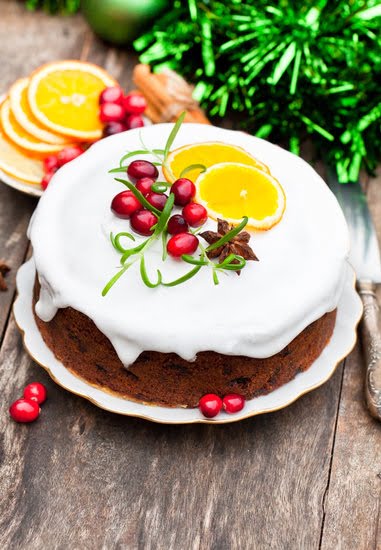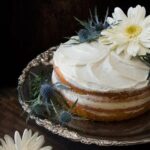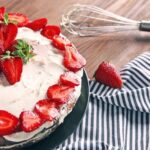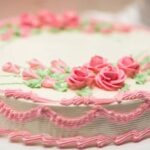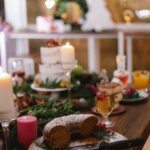Are you looking to elevate your baking skills and add a pop of creativity to your desserts? If so, decorating cakes is the perfect way to showcase your artistic talent while creating delicious treats.
Whether you’re a beginner or an experienced baker, mastering the art of cake decoration can be a rewarding and enjoyable process. From piping and frosting techniques to choosing the right tools and ingredients, this introductory section will provide you with the fundamental knowledge needed to start decorating cakes like a pro.
Before diving into the step-by-step guide, it’s essential to understand the basics of cake decorating. This includes familiarizing yourself with different techniques, such as piping and frosting, as well as mastering the art of working with buttercream and fondant. Additionally, learning how to troubleshoot common cake decorating challenges and staying updated on the latest trends and innovations in the industry will help you enhance your skills and stay ahead of the curve.
In this article, we’ll explore everything from basic decorating techniques to advanced methods that will take your cake designs to the next level. Whether you’re interested in creating stunning themed cakes for special occasions or simply want to experiment with DIY decorations, this comprehensive guide has got you covered. So grab your apron, dust off your piping bags, and get ready to unleash your creativity in cake decorating.
Step-by-Step Guide to Piping and Frosting Techniques
Piping and frosting are essential techniques in the art of decorating cakes. Whether you’re a beginner or an experienced baker, mastering these techniques can take your cakes to the next level.
Piping involves using a piping bag and various tips to create different designs and patterns with frosting, while frosting techniques involve applying a smooth and even layer of frosting to your cake. In this section, we will provide a step-by-step guide to help you perfect these essential cake decorating skills.
To start, it’s important to have the right tools for piping and frosting. A good quality piping bag, a variety of tips in different shapes and sizes, and an offset spatula for frosting are all essential items in your cake decorating toolkit. When it comes to ingredients, choosing the right type of frosting is key. Buttercream is popular for its creamy texture and easy workability, while fondant is often used for creating intricate designs and decorations.
Once you have the necessary tools and ingredients, it’s time to practice basic piping techniques such as creating lines, dots, rosettes, swirls, and shells. It’s important to hold the piping bag at the right angle and apply consistent pressure for even results.
For frosting techniques, spreading a thin layer of frosting (also known as crumb coating) before applying the final layer can help achieve a smooth finish. With practice and patience, you can develop precision and control in your piping and frosting skills which will allow you to elevate your cake decorating endeavors.
Choosing the Right Tools and Ingredients for Cake Decorating
When it comes to decorating cakes, choosing the right tools and ingredients is essential for achieving professional-looking results. Whether you are a beginner or a seasoned baker, having the proper equipment and high-quality ingredients can make a significant difference in the outcome of your decorated cakes.
First and foremost, having a set of basic decorating tools is crucial. This includes piping bags, tips of various sizes and shapes, offset spatulas, cake turntable, and a bench scraper. These tools will help you achieve smooth frosting, precise piping, and clean decorations on your cakes. Investing in quality tools may seem intimidating at first, but it will save you time and frustration in the long run.
In addition to tools, using the right ingredients is equally important. High-quality butter, confectioners’ sugar, cocoa powder, vanilla extract, food coloring gels, and fondant are some of the key ingredients for cake decorating.
Using fresh and premium ingredients can greatly enhance the flavor and appearance of your decorated cakes. It’s also important to choose ingredients that are suitable for your specific decorating technique – for example, using gel food coloring for vibrant buttercream flowers or using high-quality fondant for intricate fondant designs.
Lastly, staying organized with your tools and ingredients can make the cake decorating process more enjoyable and efficient. Keep your tools clean and organized in a designated space in your kitchen to prevent any last-minute scrambling during the decorating process. Additionally, storing your ingredients properly in a cool and dry place will ensure their freshness and longevity.
By carefully selecting the right tools and ingredients for cake decorating, you’ll be well-equipped to create beautiful and delicious masterpieces that will impress your friends and family.
Mastering the Art of Buttercream and Fondant
Buttercream Basics
When it comes to decorating cakes, buttercream is a popular choice due to its versatility and ease of use. Buttercream can be used for piping borders, creating texture, and making intricate designs. To start mastering the art of buttercream, it’s important to have the right consistency. The ideal buttercream should be smooth and easy to spread, but also hold its shape when piped. This can be achieved by adjusting the amount of powdered sugar and liquid in your recipe.
Working With Fondant
Fondant is another essential skill to master when it comes to cake decorating. This pliable icing allows you to create flawless finishes, smooth surfaces, and intricate details on your cakes.
When working with fondant, it’s important to ensure that your cake is properly iced with a thin layer of buttercream or ganache to provide a smooth base for the fondant. Kneading the fondant until it is soft and pliable will make it easier to roll out and cover the cake without any cracks or tears.
Combining Buttercream and Fondant Techniques
A popular trend in cake decorating involves combining buttercream and fondant techniques to create stunning designs. For example, using buttercream for textured backgrounds or floral decorations, then adding fondant accents for intricate details or 3D elements can add depth and dimension to your cake designs. By mastering both buttercream and fondant techniques, you’ll have the skills needed to bring any cake design idea to life.
By mastering these essential skills in buttercream and fondant techniques, you’ll be well-equipped to create beautifully decorated cakes that are sure to impress at any occasion.
Tips for Creating Stunning Cake Designs and Themes
When it comes to decorating cakes, the design and theme play a crucial role in creating a visually appealing and memorable dessert. Whether you’re a beginner or an experienced baker, here are some tips to help you create stunning cake designs and themes:
- Start with a concept: Before you begin decorating, take some time to brainstorm and come up with a design concept for your cake. Consider the occasion or event for which the cake is being made, as well as any specific themes or color schemes that might be relevant. Having a clear concept in mind will guide your decorating process and help you achieve a cohesive look.
- Use quality tools and ingredients: The key to creating professional-looking cake designs is using the right tools and ingredients. Invest in high-quality piping bags, tips, fondant molds, and edible decorations to elevate your cake decorating game. Additionally, using premium quality ingredients such as buttercream, fondant, food coloring, and edible glitter will result in better texture and taste for your finished creation.
- Get creative with textures and patterns: Experiment with different techniques to add visual interest to your cake designs. Try incorporating textured elements like ruffles, rosettes, or basketweave patterns using piping techniques. You can also use stencils or impression mats to create unique patterns on fondant-covered cakes. Adding depth through varied textures can elevate the overall look of your cake design.
With these tips in mind, you can take your cake decorating skills to the next level by creating stunning designs and themes that are sure to impress any audience.
Exploring Advanced Cake Decorating Techniques
Once you’ve mastered the basics of cake decorating, it’s time to take your skills to the next level by exploring advanced techniques. These can include intricate piping designs, using more complex fondant and gum paste decorations, and experimenting with advanced color-mixing and painting techniques. Advanced cake decorating allows for more intricate and detailed designs that will truly wow your friends and family.
One advanced technique in cake decorating is using a variety of piping tips to create elaborate designs on your cakes. With practice, you can create beautiful flowers, intricate lace patterns, and even realistic-looking borders and shapes. Additionally, mastering the art of working with fondant opens up a whole new world of possibilities for creating stunning decorations for your cakes.
Another aspect of advanced cake decorating is learning how to use different tools to create unique textures and effects on your cakes. For example, using stencil designs or airbrushing techniques can add depth and dimension to your cake decorations. Creating multi-tiered cakes with structural integrity is also an important skill to develop as you advance in your cake decorating journey.
Relevant Data for the Table
| Advanced Techniques | Description |
|---|---|
| Piping Designs | Creating intricate flowers, lace patterns, and borders |
| Working with Fondant | Learning to create elaborate fondant decorations |
| Texture and Effects | Using stencils, airbrushing, and structural design for multi-tiered cakes |
Troubleshooting Common Cake Decorating Challenges
When it comes to decorating cakes, there are bound to be some challenges that arise along the way. From dealing with fondant that’s too dry to frosting that’s not holding its shape, troubleshooting common cake decorating challenges is an important skill for any baker to develop.
One of the most common issues that cake decorators face is achieving smooth and even frosting on their cakes. This can be particularly challenging when working with buttercream, as it tends to develop air bubbles and uneven patches. To troubleshoot this, it’s crucial to start with a crumb coat and chill the cake before applying the final layer of frosting. Using a bench scraper and offset spatula can also help achieve a smoother finish.
Another common challenge in cake decorating is working with fondant. Fondant can become too dry and crack as you’re rolling it out, making it difficult to achieve clean lines and smooth surfaces on your cake. To combat this issue, try kneading a small amount of vegetable shortening into the fondant to restore moisture and make it more pliable.
Lastly, creating intricate designs and themes on cakes can often present its own set of challenges, especially when using piping techniques. If your piping tips are clogging or the icing isn’t coming out smoothly, make sure that your icing consistency is correct and that your piping bag is properly filled and sealed. Additionally, practicing on parchment paper or a practice board before decorating the actual cake can help improve your piping skills.
Showcasing Creative Ideas for DIY Cake Decorations
When it comes to decorating cakes, DIY decorations can add a personal and creative touch to any baked creation. From simple techniques like using fresh flowers or edible glitter, to more intricate designs such as hand-piped icing or fondant sculptures, there are endless possibilities for creating unique and beautiful cake decorations at home.
One creative idea for DIY cake decorations is to use stencils to create patterns or designs on the surface of the cake. This can be done by placing a stencil over the cake and lightly dusting it with cocoa powder, powdered sugar, or edible luster dust. The result is a beautiful, professional-looking design that can elevate even the simplest of cakes.
Another fun and easy DIY cake decoration idea is to use fresh fruit or berries as garnishes. Not only do they add a pop of color and freshness to the cake, but they also provide a delicious contrast to the sweetness of the frosting. Berries like raspberries, blueberries, and strawberries can be arranged in elegant patterns or used to create a rustic, natural look.
For those who want to take their DIY cake decorating skills to the next level, creating edible chocolate decorations can add an impressive and sophisticated touch to any dessert. From molded chocolate shapes to delicate chocolate curls and shards, there are endless possibilities for using chocolate as a decorative element on cakes.
| DIY Cake Decoration Idea | Description |
|---|---|
| Stenciled Designs | Use stencils and edible ingredients like cocoa powder or powdered sugar to create beautiful patterns on your cakes. |
| Fresh Fruit Garnishes | Add vibrant colors and natural sweetness by using fresh berries or fruit as decorative elements on your cakes. |
| Edible Chocolate Decorations | Create impressive and sophisticated decorations using melted chocolate in various forms like curls, shards, or molded shapes. |
The Latest Cake Decorating Trends and Innovations
In recent years, the world of cake decorating has experienced a surge of new trends and innovations that have transformed the art of creating stunning and delicious cakes. From new techniques to innovative tools and ingredients, cake decorators are constantly pushing the boundaries of creativity. Here are some key trends and innovations that are shaping the world of cake decorating today:
3D Printing in Cake Decorating
One of the most exciting developments in cake decorating is the integration of 3D printing technology. This innovation allows decorators to create intricate and detailed designs, textures, and even edible sculptures with unprecedented precision. With 3D printing, decorators can bring their wildest cake ideas to life in ways that were previously impossible.
Incorporating Vegan and Gluten-Free Options
As dietary preferences and restrictions continue to evolve, cake decorators are embracing the challenge of creating beautiful cakes that cater to a wider range of dietary needs. From plant-based buttercream to gluten-free fondant, decorators are finding innovative ways to ensure that everyone can enjoy a visually stunning and delicious cake.
Interactive Projection Mapping
Projection mapping technology has also made its way into the world of cake decorating, allowing for interactive displays on cakes. Decorators can project moving images, patterns, and even videos onto cakes, creating an immersive experience for guests at events such as weddings or birthday parties.
As cake decorating continues to evolve and push creative boundaries, these latest trends and innovations demonstrate the endless possibilities for turning a simple cake into a work of art. Whether it’s through advanced technology or inclusive ingredient choices, decorators are finding new ways to delight clients and consumers with their visually stunning creations.
Conclusion
In conclusion, mastering the art of cake decorating is an exciting and rewarding journey that allows you to unleash your creativity and showcase your talent. By understanding the basics, learning piping and frosting techniques, choosing the right tools and ingredients, and mastering buttercream and fondant, you can create stunning cake designs and themes that will impress your family and friends.
As you continue to explore advanced cake decorating techniques and troubleshoot common challenges, don’t be afraid to think outside the box and experiment with new ideas. Whether it’s showcasing creative DIY cake decorations or staying updated on the latest trends and innovations in cake decorating, there are endless possibilities for expressing your personal style through this art form.
With dedication, patience, and practice, you can elevate your skills in decorating cakes to a whole new level. As you embrace your creativity in this craft, remember that there are no limits to what you can achieve. So go ahead, let your imagination run wild as you continue to decorate cakes with passion and flair.
Frequently Asked Questions
What Is the Best Way to Decorate a Cake?
The best way to decorate a cake is to start with a smooth and even layer of frosting. Then, you can get creative by using different piping techniques, adding edible decorations, or even incorporating fresh fruits and flowers for a beautiful and delicious finish.
What Are the 7 Different Cake Decorating Techniques?
There are several cake decorating techniques that bakers can use to create stunning designs. These include piping with buttercream or royal icing, using fondant for sculpted designs or covering the entire cake, creating textured patterns with stencils or combs, painting with edible food colors, adding edible embellishments like pearls or sprinkles, and even using airbrushing for a professional finish.
How Do You Make a Cake Look Presentable?
To make a cake look presentable, it’s important to pay attention to the details. Start by ensuring that the cake is evenly frosted and any crumbs are smoothed out.
Then, consider adding decorative touches like fresh flowers, fruit garnishes, or piped designs that complement the flavor of the cake. Presentation is key so using a cake stand or platter that elevates the cake can also add to its overall attractiveness.

Welcome to our cake decorating blog! My name is Destiny Flores, and I am the proud owner of a cake decorating business named Cake Karma. Our mission is to provide delicious, beautiful cakes for all occasions. We specialize in creating custom cakes that are tailored specifically to each customer’s individual needs and tastes.

